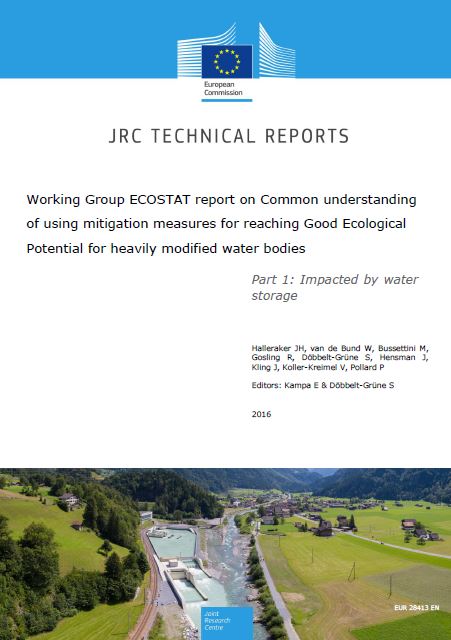
Common Understanding of Using Mitigation Measures for Reaching Good Ecological Potential for Heavily Modified Water Bodies
Part 1: Impacted by water storage
- Publication
- Citation
Halleraker et al. (authors). Kampa, Eleftheria and Sebastian Döbbelt-Grüne (eds.) 2016: Working Group ECOSTAT Report On Common Understanding Of Using Mitigation Measures For Reaching Good Ecological Potential For Heavily Modified Water Bodies. Luxembourg.
In the latest Work Programme 2016-2018 of the Common Implementation Strategy (CIS) of the Water Framework Directive (WFD), the Water Directors of European countries agreed to set up a specific Ad-hoc Task Group (ATG) on best practice and guidance to deal with hydromorphology. In this context, one of the core activities of the Working Group (WG) ECOSTAT of the WFD CIS has been to compare the ecological quality expected by different countries for water bodies impacted by water storage. The process involved the use of a number of workshops and questionnaires to collect relevant information from European water managers. This report is based on information collected via a template on mitigation measures for water bodies impacted by water storage, which was completed by 23 countries and edited by Eleftheria Kampa (Ecologic Institute) and Sebastian Döbbelt-Grüne (Planungsbüro Koenzen).
This report was written by the GEP water storage core group of the WG ECOSTAT.
Hydromorphological alterations for water storage are among the most widespread pressures on water bodies in Europe. Because of the importance of the water uses relying on water storage, such as hydroelectricity generation and public water supply, many of the affected water bodies have been designated as heavily modified. However, in a substantial number of these water bodies, the effects of the alterations are expected to require some mitigation if good ecological potential (GEP) is to be achieved.
The report is available for download.



